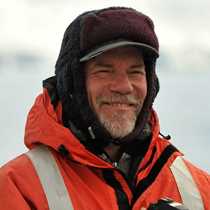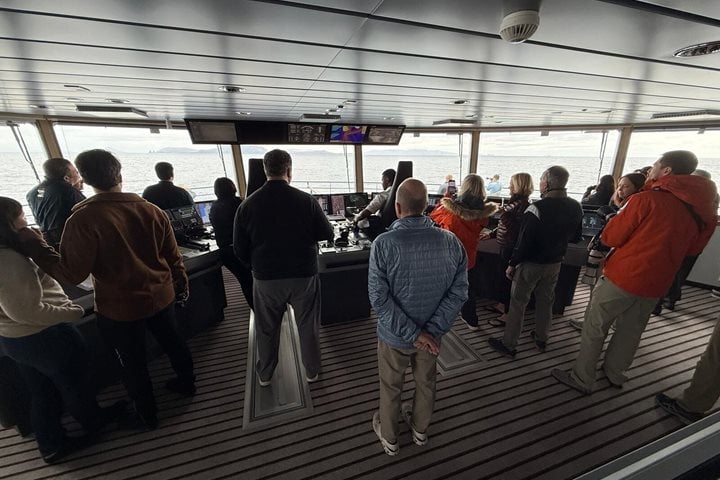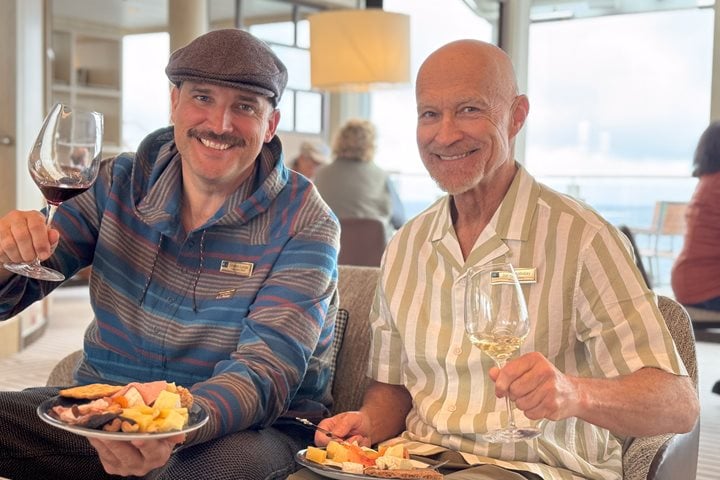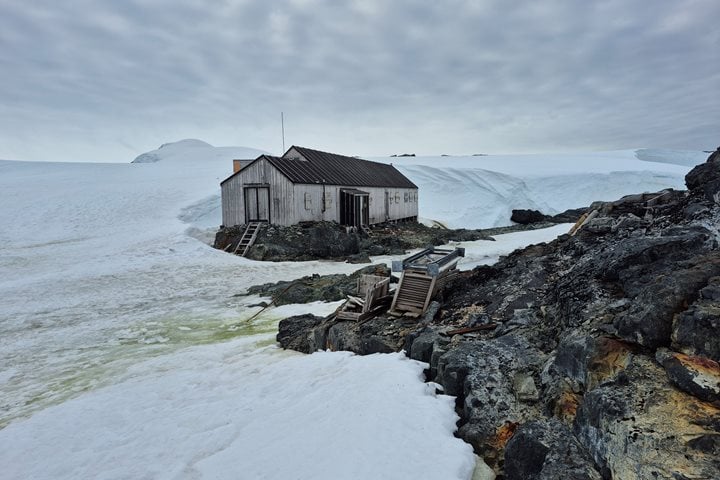Calm seas in the Drake! Over the past four centuries, many sailors have prayed for a gentle passage here and been disappointed. There is always another storm on the way, endlessly circling the southern continent, shredding the sea into violent waves. Just two days ago winds as strong as 60 knots were howling past Cape Horn, but the storm has moved on and we have ideal conditions. There is a low swell rolling through (just enough to rock us to sleep last night) and a light wind blowing (just enough to please the albatross that skimmed the waves around our ship all day).
We slept in a bit this morning, resting up from our travels and building our store of energy for the adventures soon to come. Once we were up and about, fueled by a hearty breakfast, there was plenty to keep us busy through the day as we made good speed on our southward course. First, we gathered in the lounge to meet the naturalists, photographers, historians, and leaders who will be our companions through the next three weeks of exploration, then headed out of doors, into a mild sunny morning, to observe the beautiful albatross and other seabirds in our wake. With the help of the naturalists we learned to pick out the different ages of huge wandering albatross. White wings and backs with black wingtips distinguished the older birds while the juveniles were dark all over their upper parts—different enough that they looked like an entirely different species. At the same time, in conversations with the photo team, we discussed the best techniques for capturing beautiful sharp images of these magnificent birds as they soared past the stern and circled back again and again.
Just after lunch came the highlight of the day: killer whales! Our keen-eyed observers on the bridge spotted their tall dorsal fins from some distance, so we all had time to dress warmly and head out into the stronger winds on the bow as we approached them. They seemed a bit unsure what to make of us at first, but then made several passes very close to the bow, giving us fantastic looks at their powerful bodies and beautiful black and white markings. Bob and Lisa, our onboard killer whale researchers, watched carefully and explained to us that these were type ‘A’ killer whales, hunters of the great whales, who make their home in the deep seas that surround Antarctica. Although larger whales are their main prey, there was some evidence that they were feeding on penguins when we approached—a new observation, even for the researchers. The group included one large male, one adult female—his mother—and a few younger females. We were able to stay with them for most of an hour and get some fantastic images as they passed close to the bow.
Killer whales in the Drake Passage! It was the perfect sighting to take best advantage of the lovely conditions today, here in some of the stormiest waters in the world.







